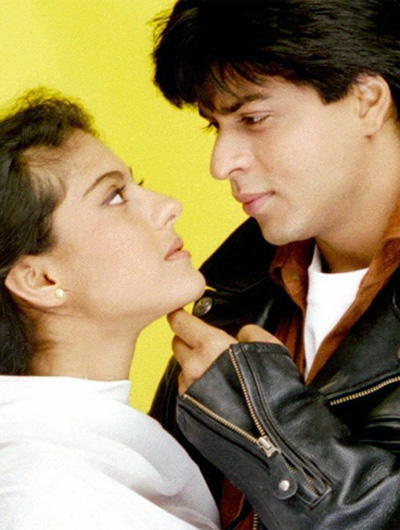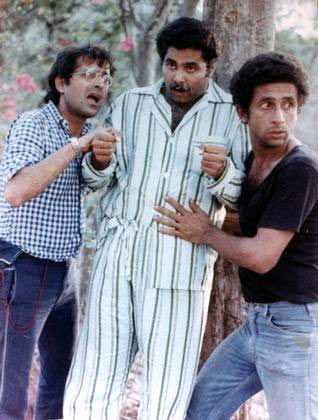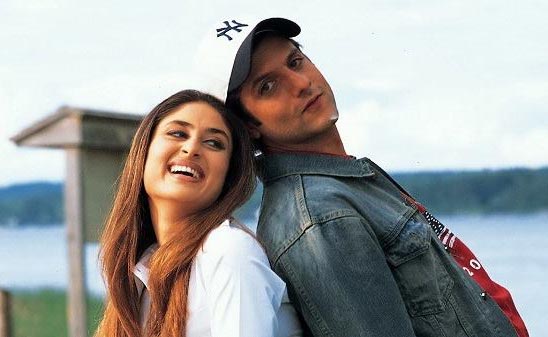Indian Movies Bollywood Biography
source(google.com.pk)
Bollywood movies are very popular for the “Romance” portrayed in their plot. Romance in Bollywood has evolved throughout the ages. But the one thing, that has remained constant are the unofficial and official ban on any depiction that may suggest something which is not a part of the “Indian” culture. Westernization was always shown as something negative and alien. Let’s have a closer look at how Hindi cinema deals with this censorship code that has been set up. Bollywood adopted a new way to recreate the same passion that usually a ‘kiss’ would generate; they substitute these by song and dance routines.
Songs are basically a description of the passionate seen with no suggestive visual imagery to aid it. It’s left to the audiences’ interpretation. Even though there is no written ban against “kissing” scenes in Hindi cinema, it is believed that acts of passion are something which is done privately and not publicly. Displaying a kissing scene would be on-screen would be considered too public. However, the lip movement while singing the songs, can also be related to the lip moveme middle of paper they believed acts of love were too be only privately displayed. Additionally, they created a social commentary where the message given out puts women into a situation where they need to live up to some idealistic qualities, put forth by men. Even though, the Bollywood films are fictious, they still give you an idea of the social pressure that the female gender goes through. Lastly, prohibition on films should be stricter with real vulgarity that is these days being portrayed on-screen, rather than focusing on the small display of affection. The increase in globalization in the Indian subcontinent has brought along with it a series of new genres in Bollywood movies. Movies showcasing freedom being fought for by the youth and women are just a couple of interesting ones. I’ll be exploring two different movies Dor (2006) and Rang De Basanti (2006), each of which has its own take on ‘freedom’ and ‘choice’.
Dor has a very simple storyline; two female protagonists (Meera and Zeenat) whose husbands respectively (Shankar and Amir) leave India to get employed in the Middle East. Unfortunately, employment in India is scarce, forcing lower middle class families to resort to such options. These families are constantly fighting for their freedom of survival. Shankar is in a similar dilemma. He has no choice but to go to Saudi Arabia and earn enough money so that his family in Rajasthan can repossess their haveli (a large Rajasthani house) back from a moneylender. Notice here that Shankar's own personal 'freedom' is curtailed by his efforts to 'free' his family's house, which they could no longer afford.
The first silent feature film made in India was Raja Harishchandra in 1913 (Media Scape n.p.) By the 1930s, the Indian Film Industry produced over 200 silent films annually before the first Indian sound film titled Alam Ara was produced in 1931 (Media Scape n.p.)
The focus of the paper will be with regards to the most significant and popular genre in India: Bollywood. The popular Bollywood genre caters to the large Hindi-speaking population in Northern India. Although the term “Bollywood” was originally used to classify the Hindi language cinema of Mumbai (formerly Bombay), it has been adopted to label the entire Indian Film Industry altogether. The name Bollywood is the portmanteau of Bombay, the former name for Mumbai, and Hollywood, the heart of the American Film Industry (Media Scape n.p.) Bollywood is the oldest film cluster in India, dating as early back to the 20th century.
Bollywood is famous for its Masala films that were originally made in the 1970s and still remain as Bollywood’s dominant genre to this day. Bollywood has been marketed to the West and has gained much popularity overseas, especially due to the growing Indian Diaspora (Dave 3). The growth of overseas box office for Indian films is expected to outpace the industry’s domestic box office at 18% compounded annual growth compared to 13% in India itself (Dave 3)
Indian Movies Bollywood

Indian Movies Bollywood

Indian Movies Bollywood

Indian Movies Bollywood

Indian Movies Bollywood

Indian Movies Bollywood

Indian Movies Bollywood

Indian Movies Bollywood

Indian Movies Bollywood

Indian Movies Bollywood

No comments:
Post a Comment